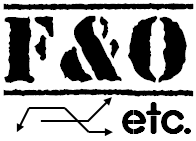|
|
Time Decay Concept in Options Trading
What is Time Decay Concept of Options?
To understand the Time decay, we need to look at the pricing part of options. Take the example of Microsoft options. Yesterday, Microsoft closed at 31.36 USD per share (Spot Price). The call option on microsoft as underlying with a strike price of 30.00 was trading at 2.5$.
Now check this price bifurcation:
The underlying is at 31.36, while the option had a strike price of 30. Hence the difference is 1.36 USD. However, the price of option is 2.5 USD, which is higher than the difference between underlying and strike price.
So the question arises that when the difference is just 1.36, why is the option trading at 2.5 USD? What is this extra 1.14 USD coming from and how should that be accounted for?
The answer is that this extra 1.14 USD is called the Time Value of Option. Since the trade date is today, i.e. 20 April, while the Option is going to expire in future, i.e. in May 2010. So the seller of the option is giving some time liberty to the buyer, the time in which the underlying price can move up or down significantly. And the seller charges a premium for offering this time liberty. This extra value of 1.14 USD is called the Time value of option. Some people also attempt to explain this as opportunity cost of capital, or the interest rate that a person can earn during the time from now to the expiry of the option. Infact, the Black Scholes model used for pricing options takes the interest rate as well as the available time till the expiry of the option into consideration while making the calculation.
What happens to Time Value of Options and why does it decay?
As the name suggests, this is the TIME VALUE of option, and as the time to expiry keeps on reducing with each passing day, the time value of option also keeps diminshing. Have a look at the attached graph showing the variation or better to say DECLINE in option price value as the time passes by:
As we can see clearly from the above graph, the option decay value keeps on reducing as the expiry date of option come closer. The graph indicates that in the beginning, the option decay rate is very less, but as the expiry date keeps coming closer, the decay rate in option speeds up rapidly. In the last few days just before the expiry, the time value in option decays rapidly and the actual option price is almost matching the underlying price.
Infact, there are different decay rates for At the money options, In the Money and Out of the money options. The time decay is the fastest when it comes to At the money option. However, since the underlying price might keep changing rapidly, you may see that an option which is AT the money today, may be out of the money or deep in the money tomorrow. Hence, there is a lot of variation in the time decay value in Options. In a later article, we'll cover the various aspects of Time Decay and its impact for ATM, OTM and ITM options.

0 Comments: Post your Comments
Wish you all profitable derivatives trading and investing activities with safety! = = Post a Comment